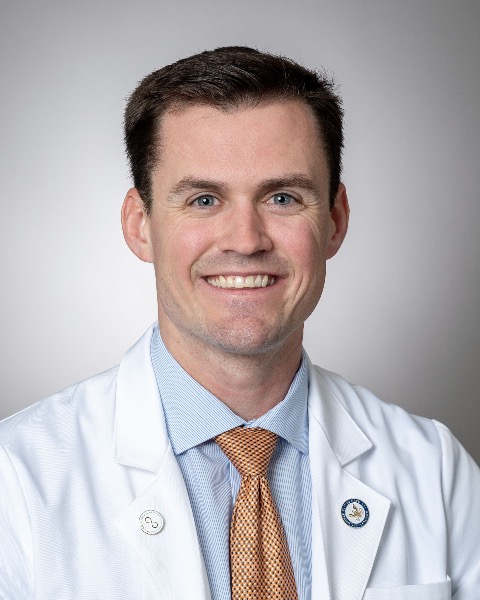Anatomy Education: Teaching Methods & Innovations Posters
Poster: Anatomy Education: Teaching Methods & Innovations Posters
101 - Mastering Anatomy Through Collaboration: Elevating Learning with Open-ended Practice Questions
Saturday, March 23, 2024
5:00pm - 7:00pm US EDT
Location: Sheraton Hall
Poster Board Number: 101
There are separate poster presentation times for odd and even posters.
Odd poster #s – first hour
Even poster #s – second hour
Co-authors:
There are separate poster presentation times for odd and even posters.
Odd poster #s – first hour
Even poster #s – second hour
Co-authors:
Zi Guo - Eastern Virginia Medical School; Kai Rossbach - Eastern Virginia Medical School; Julie Kerry - Eastern Virginia Medical School; Chad Eitel - Colorado State University; Tod Clapp - Colorado State University; Natascha Heise - Eastern Virginia Medical School

Michael Foley
Eastern Virginia Medical School
Norfolk, Virginia, United States
Presenting Author(s)
Abstract Body : Introduction
Physicians are not only tasked to have the necessary knowledge to provide quality patient care but also to have sufficient problem-solving and critical thinking skills. Due to the continued shortening of the pre-clerkship phase at US medical schools, students have been tasked to find adequate outside resources such as practice questions to supplement their learning and skills, often without success. Here, we propose the implementation of faculty-led collaborative practice question sessions to assist medical students in their learning and study skills.
Methods
First year medical and master's students enrolled in an 8-week human anatomy course (n = 181) at a medical school in Virginia, USA, were invited to six optional faculty-led sessions where students collaboratively worked through 20-25 open-ended questions, focusing on high-yield STEP 1 topics. The course director extended direct invitations to students at academic risk, while attendance was open to anyone interested. Clinical vignettes tested a range of low and high-level understanding and when appropriate, medical imaging, virtual reality, and anatomical drawings were used to support explanations after group discussion. Data was collected via attendance, course outcomes, and a pre- and post-survey. Ordinal survey questions were analyzed using a Likert scale, and open-ended questions were analyzed using an open coding scheme.
Results
Participation increased throughout the course (n = 31 to n = 49), and students who attended experienced a greater score improvement from their midterm to the final summative anatomy examination compared to non-attending students (5.24% vs 0.12%). The 16 students who completed both pre- and post-surveys experienced a positive shift in confidence in all anatomical regions and their study methods. Of 25 post-survey responses, 23 students (92%) agreed that these sessions helped them progress toward their course goals. Anatomical drawings were the most valued image supplement for learning enhancement (n = 24, 96%). Motivators for attendance were learning strategies, small group discussion, academic success, knowledge, and confidence. Students most favored the session structure, practice question format, and the safe learning environment.
Conclusion
The increasing attendance and agreeable nature of the session impact on goal progression reveals that students believe these active learning sessions are valuable in their anatomy education. The increase in confidence and the correlated increase in examination performance also demonstrates the positive trend toward academic success. The strong positive feedback supports continuation through the pre-clerkship phase, allowing students to further improve their skills in a collaborative and safe environment.
Physicians are not only tasked to have the necessary knowledge to provide quality patient care but also to have sufficient problem-solving and critical thinking skills. Due to the continued shortening of the pre-clerkship phase at US medical schools, students have been tasked to find adequate outside resources such as practice questions to supplement their learning and skills, often without success. Here, we propose the implementation of faculty-led collaborative practice question sessions to assist medical students in their learning and study skills.
Methods
First year medical and master's students enrolled in an 8-week human anatomy course (n = 181) at a medical school in Virginia, USA, were invited to six optional faculty-led sessions where students collaboratively worked through 20-25 open-ended questions, focusing on high-yield STEP 1 topics. The course director extended direct invitations to students at academic risk, while attendance was open to anyone interested. Clinical vignettes tested a range of low and high-level understanding and when appropriate, medical imaging, virtual reality, and anatomical drawings were used to support explanations after group discussion. Data was collected via attendance, course outcomes, and a pre- and post-survey. Ordinal survey questions were analyzed using a Likert scale, and open-ended questions were analyzed using an open coding scheme.
Results
Participation increased throughout the course (n = 31 to n = 49), and students who attended experienced a greater score improvement from their midterm to the final summative anatomy examination compared to non-attending students (5.24% vs 0.12%). The 16 students who completed both pre- and post-surveys experienced a positive shift in confidence in all anatomical regions and their study methods. Of 25 post-survey responses, 23 students (92%) agreed that these sessions helped them progress toward their course goals. Anatomical drawings were the most valued image supplement for learning enhancement (n = 24, 96%). Motivators for attendance were learning strategies, small group discussion, academic success, knowledge, and confidence. Students most favored the session structure, practice question format, and the safe learning environment.
Conclusion
The increasing attendance and agreeable nature of the session impact on goal progression reveals that students believe these active learning sessions are valuable in their anatomy education. The increase in confidence and the correlated increase in examination performance also demonstrates the positive trend toward academic success. The strong positive feedback supports continuation through the pre-clerkship phase, allowing students to further improve their skills in a collaborative and safe environment.

